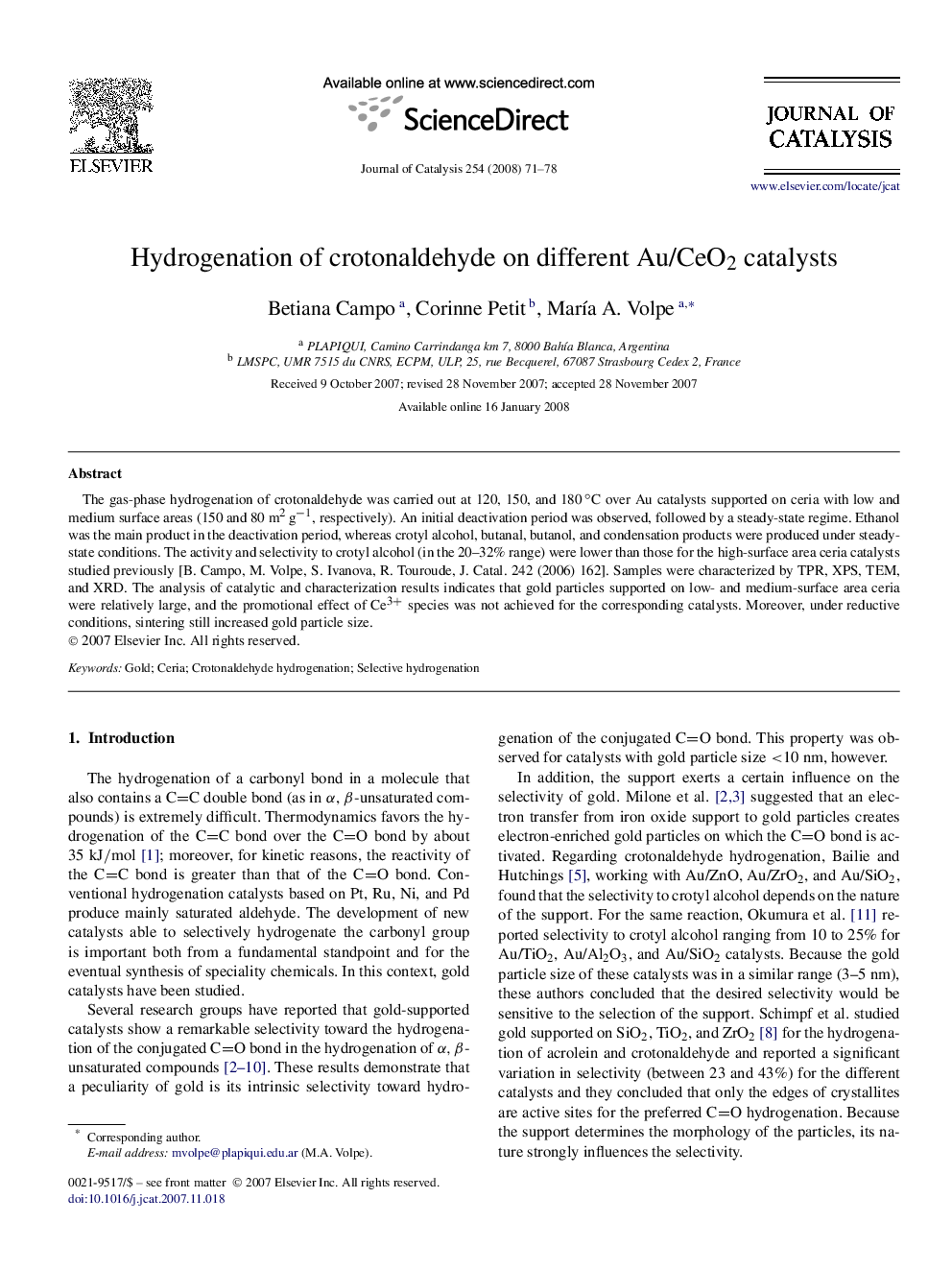| Article ID | Journal | Published Year | Pages | File Type |
|---|---|---|---|---|
| 62358 | Journal of Catalysis | 2008 | 8 Pages |
The gas-phase hydrogenation of crotonaldehyde was carried out at 120, 150, and 180 °C over Au catalysts supported on ceria with low and medium surface areas (150 and 80 m2 g−1, respectively). An initial deactivation period was observed, followed by a steady-state regime. Ethanol was the main product in the deactivation period, whereas crotyl alcohol, butanal, butanol, and condensation products were produced under steady-state conditions. The activity and selectivity to crotyl alcohol (in the 20–32% range) were lower than those for the high-surface area ceria catalysts studied previously [B. Campo, M. Volpe, S. Ivanova, R. Touroude, J. Catal. 242 (2006) 162]. Samples were characterized by TPR, XPS, TEM, and XRD. The analysis of catalytic and characterization results indicates that gold particles supported on low- and medium-surface area ceria were relatively large, and the promotional effect of Ce3+ species was not achieved for the corresponding catalysts. Moreover, under reductive conditions, sintering still increased gold particle size.
